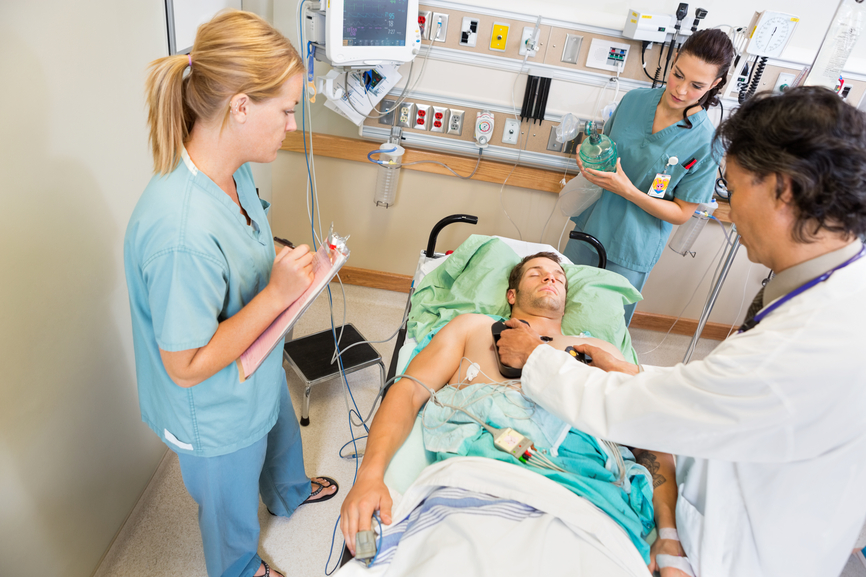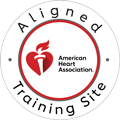The sudden onset of cardiac arrest is one of the most critical emergencies in healthcare, demanding immediate, precise action from medical professionals. Advanced Cardiac Life Support, or ACLS training, provides the necessary framework and standardized protocols to manage these life-threatening events effectively, improving patient outcomes across various clinical settings. Among the rhythms encountered during cardiac arrest, Pulseless Electrical Activity, known as PEA arrest, presents a unique and challenging scenario that requires distinct management steps. This article serves as a clear and informative guide, outlining the essential ACLS management strategies specifically tailored for cases involving PEA arrest, ensuring practitioners are prepared to handle this time-sensitive emergency with confidence and skill.

What is a PEA Arrest?
To understand the treatment, we must first clearly define a PEA arrest. Pulseless Electrical Activity is a classification of cardiac arrest where the patient’s heart monitor shows an organized electrical rhythm, but there is no detectable pulse, meaning the heart is not effectively pumping blood. This is a non-perfusing rhythm; while the heart’s electrical system is active, the mechanical function required to circulate blood has failed. This distinction is paramount in the ACLS algorithm, as it dictates the immediate course of treatment. Crucially, PEA is categorized as a non-shockable rhythm. It is fundamentally different from Ventricular Fibrillation (VF) or Pulseless Ventricular Tachycardia (VT), which are chaotic electrical activities that respond to defibrillation. Attempting to shock a patient in PEA not only fails to resolve the underlying issue but also causes unnecessary interruption in chest compressions, thereby reducing the chances of a positive result. Therefore, recognizing PEA immediately as a non-shockable rhythm is the first critical step toward effective management.
The PEA Algorithm in ACLS
The ACLS protocol for PEA is structured to prioritize circulation and identify reversible causes, all while adhering to a strict, continuous rhythm. The protocol demands that high-quality cardiopulmonary resuscitation, or CPR, be initiated immediately upon recognizing the cardiac arrest and confirming the rhythm. The emphasis is on deep, fast compressions with full chest recoil, aiming to artificially circulate oxygenated blood to the vital organs. Concurrently, the medical team must detail monitoring of the patient’s heart rhythm and assess the presence of a pulse every two minutes, minimizing the duration of these interruptions to ten seconds or less. Airway management is another concurrent priority; ensuring a patent airway, providing supplemental oxygen, and assisting ventilation are necessary to deliver oxygen to the lungs, which is then circulated by the ongoing chest compressions. As previously emphasized, defibrillation is not indicated for a PEA arrest, and the team must focus their efforts on pharmacologic intervention and identifying the reversible causes, often referred to as the “Hs and Ts.”
PEA Medication for ACLS
The pharmacological management of PEA is centered on a single, vital medication: epinephrine. As the primary drug for ACLS non-shockable rhythms, epinephrine is administered at a dosage of one milligram intravenously or intraosseously every three to five minutes for the duration of the resuscitation attempt. Epinephrine’s physiological role is to act as a potent vasoconstrictor through its alpha-adrenergic properties. This powerful vasoconstriction helps to increase the patient’s aortic diastolic pressure, which is a key determinant of coronary perfusion pressure. In the setting of cardiac arrest, increasing the coronary perfusion pressure is absolutely critical because it facilitates blood flow to the heart muscle itself, thereby increasing the likelihood that the heart can generate a perfusing rhythm and achieve Return of Spontaneous Circulation. This medication is one part of a cycle of continuous CPR, rhythm checks, and the essential search for treatable underlying etiologies.
The Algorithm for Pulseless Arrest
To fully appreciate the PEA algorithm, it is beneficial to understand its place within the broader ACLS algorithm for pulseless arrest. The general protocol systematically separates patients into two distinct branches based on their cardiac rhythm, guiding the medical team down a clear pathway.
- Shockable rhythms like Ventricular Fibrillation and Pulseless Ventricular Tachycardia require immediate defibrillation as the priority intervention, with epinephrine and antiarrhythmics administered later in the cycle.
- Non-shockable rhythms, which include both Pulseless Electrical Activity and asystole, do not respond to electricity and therefore mandate immediate focus on drug therapy, specifically epinephrine, and the vigorous pursuit of reversible causes.
FAQs
- What is PEA and why is it considered a non-shockable rhythm?
Pulseless Electrical Activity (PEA) is a cardiac arrest condition where the heart shows organized electrical activity on the monitor, but there’s no detectable pulse or effective cardiac output. It’s classified as a non-shockable rhythm because defibrillation won’t restore circulation—instead, treatment focuses on high-quality CPR and identifying the underlying reversible causes like hypovolemia, hypoxia, or tension pneumothorax.
Call Us Now
Get the Best CPR Class in Columbus Today!
- What are the H’s and T’s that ACLS providers should remember during PEA arrest?
The H’s and T’s are mnemonic devices for remembering reversible causes of PEA. The H’s include: Hypovolemia, Hypoxia, Hydrogen ion (acidosis), Hypo/hyperkalemia, and Hypothermia. The T’s include: Tension pneumothorax, Tamponade (cardiac), Toxins, Thrombosis (pulmonary), and Thrombosis (coronary). Systematically addressing these potential causes while maintaining CPR is crucial for successful resuscitation.
- How often should epinephrine be administered during a PEA arrest?
According to ACLS guidelines, epinephrine should be administered as soon as possible in PEA arrest cases and then every 3-5 minutes throughout the resuscitation attempt. The standard dose is 1 mg IV/IO push. Early and regular epinephrine administration helps increase coronary and cerebral perfusion pressure, potentially improving outcomes.
- What makes high-quality CPR so critical in PEA arrest management?
High-quality CPR is the foundation of PEA arrest management because it’s the primary method of maintaining blood flow to vital organs when the heart cannot pump effectively. This means providing compressions at a rate of 100-120 per minute, with a depth of at least 2 inches for adults, allowing complete chest recoil, and minimizing interruptions to less than 10 seconds. Without effective CPR, even treating reversible causes won’t lead to successful resuscitation.
Get Certified Today and Be Ready to Save Lives
Master the skills to handle PEA arrests and other cardiac emergencies with confidence. CPR Columbus offers comprehensive ACLS classes in Columbus that provide hands-on training in all critical protocols. Whether you need initial certification or renewal, our stress-free courses prepare you for real-world emergencies. We also provide CPR certification in Columbus for BLS, PALS, and CPR and First Aid. As an American Heart Association training site, we deliver the best CPR training in Columbus. Enroll now and become the difference in someone’s survival.


